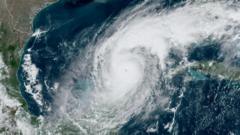The upcoming Atlantic hurricane season is anticipated to be busier than usual, with NOAA suggesting that the frequency of storms may surpass historical averages. Official estimates predict between 13 to 19 named tropical storms, with six to ten of those likely to form into hurricanes, including three to five potentially reaching major category status (Category 3 or higher). Scientists attribute factors such as elevated sea temperatures and the absence of El Niño conditions, which typically dampen hurricane activity, to this heightened expectation.
Climate change continues to play a significant role in shaping these forecasts, with warmer sea temperatures providing essential fuel for storm development. However, experts emphasize potential disruptions to accurate storm forecasting due to significant staffing cuts at NOAA that have left the agency critically understaffed.
As the number of hurricanes is set to exceed the long-term average of seven per year, research scientists have warned that these cuts—instigated as part of the Trump administration's cost-cutting measures—could undermine efforts to adequately track and prepare for impending hurricanes. With fewer personnel available to conduct necessary forecasting and analyses, the potential for systemic burnout among remaining staff is high.
Reports suggest that more than 150 key positions within NOAA are currently unfilled, despite the looming hurricane season, raising concerns about the organization's capacity to operate effectively. Experts voiced that reduced manpower may hinder the so-called "hurricane hunter" flights, crucial for collecting data as storms approach land. The decline in atmospheric observations, including weather balloon launches, has further intensified anxiety around the accuracy of hurricane forecasts.
Although NOAA maintains it possesses leading scientists and continues to refine forecasting methods, the impact of these staffing challenges could be serious, according to climate specialists. They underscore that without robust data collection across the globe, weather forecasts—potentially affecting areas beyond the U.S.—could suffer significantly.
The situation calls for immediate attention, and the public remains hopeful for resolution to ensure safety and preparedness in face of the unpredictable hurricane season ahead.





















